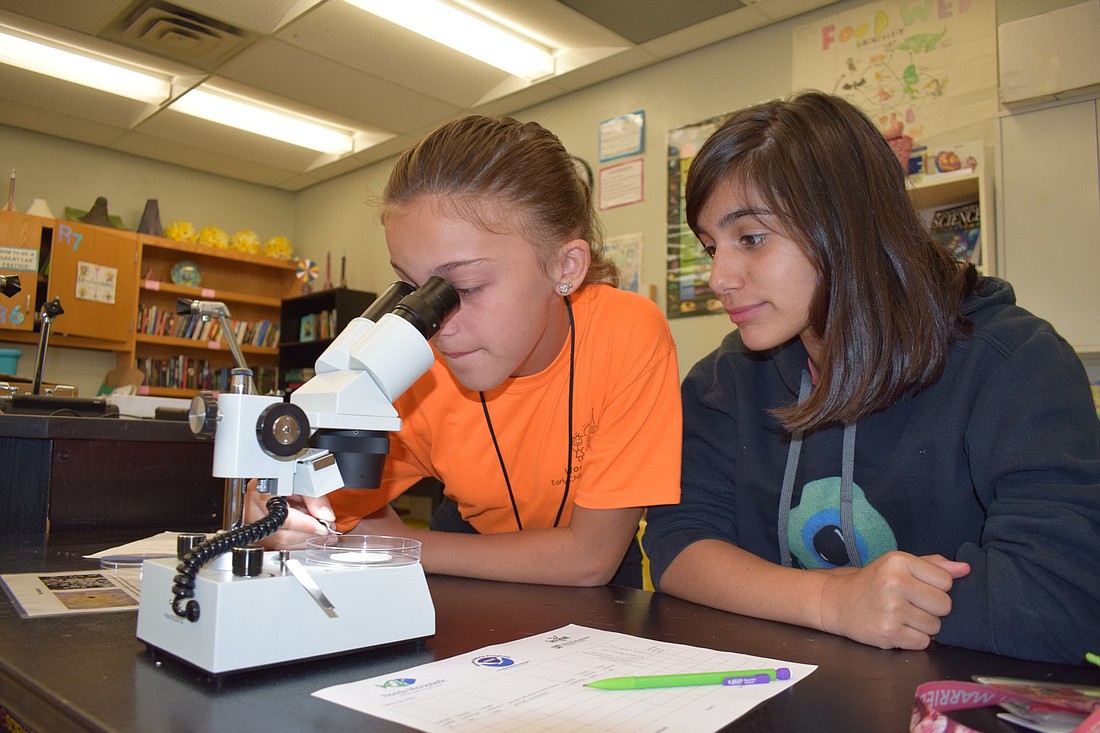- April 28, 2024
-
-
Loading

Loading

When Mason Best, a seventh-grader at Braden River Middle School, looked through a microscope, he found five fibers.
The fibers are one of the types of microplastics, which are tiny pieces of plastic that pollute the environment, that seventh-grade science students were searching for Oct. 23.
“We’re trying to spread awareness of microplastics,” said seventh-grader Nicolas Juliano. “The overall goal is to see what we can do to help and just have fun doing the project.”
Forty Science, Technology, Engineering, Arts and Math students went on a field trip Sept. 20 to Emerson Point where Nature’s Academy, a nonprofit organization and citizen science institute, taught them about microplastics and the impact they have on the environment.
Nature’s Academy then came to the school Oct. 22 through Oct. 24 to help the rest of the seventh grade’s more than 250 students with filtrating water samples and looking for microplastics under microscopes.
The field trip and experiments gave students a hands-on experience, which science teacher Jennifer Hall said makes students like science and want to go into science-related careers.
“The kids actually remember it because they do it with their hands, and they get involved and it makes them care about their community and care what’s going on,” Hall said.
Students who went on the field trip made presentations to other seventh-grade science classes before the classes conducted the same experiments.
Juliano and Wyatt Gadeken, also a seventh-grader, both went on the field trip and assisted other seventh graders as they were filtering their water samples. They said the project opened their eyes to the impact of microplastics on the environment.
“When you think about it, this is a real-world problem we’re trying to solve, and it matters to everyone, not just a couple of people,” Gadeken said.
Juliano and Gadaken had seen photos of oceans filled with plastic but didn’t believe it until they saw the microplastics under the microscopes
“You really can’t believe it until you see it firsthand,” Juliano said.